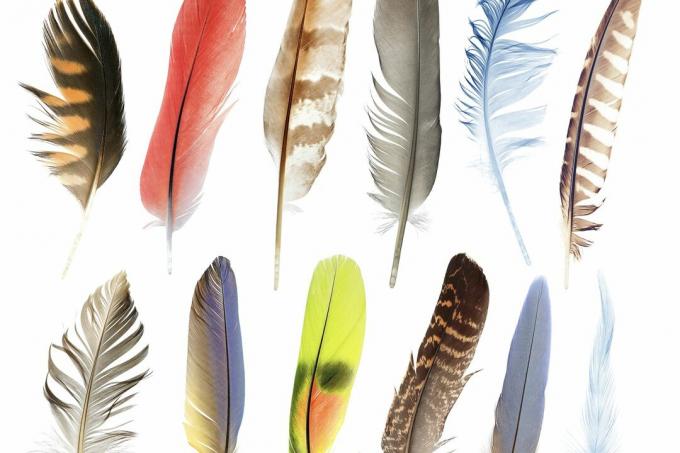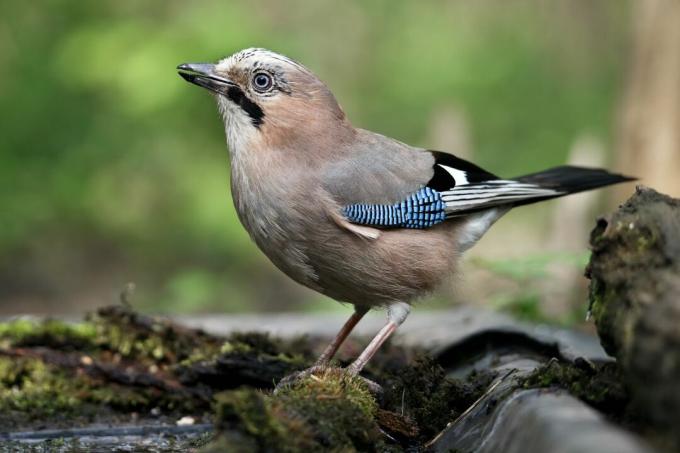Where does the splendor of bird feathers come from? Why are there different types of feathers and why do some birds change their plumage with the seasons? We would like to answer these and other exciting questions for you here.

The plumage of birds is a unique feature in the animal kingdom. Feathers allow that bird flight, they keep you warm and dry, and they also send visual signals to conspecifics and other animals. Many bird species are characterized by magnificent, colorful plumage, which not only impresses potential partners, but also inspires us humans. What this splendor is all about, why birds have different feathers and why some Birds are colored differently at different times of the year, you can find out here in our large info article.
"Contents"
- Feathers of birds: properties
- spring types
- identify feathers
- moult
Feathers of birds: properties
Feathers are made of keratin, just like the hair on our heads, the fur of a lion, the scales of a crocodile or the spines of a hedgehog. They are characterized by an elongated, solid quill, from which fine feather branches emanate, which interlock to form the soft but dimensionally stable plume. The magnificent and often shimmering color impression of the feathers is created by the incorporation of pigments and a special surface structure.

spring types
There are basically two types of springs: the lower feathers, also called down or dunes, and den contour feathers. Down has only a short quill and usually unattached feather branches, which does not create a real plume, but a tangled, soft tuft of feathers. The down forms the undergarment of birds and protects them from the cold. Contour springs, on the other hand, are further subdivided and have different functions depending on the spring type:
- coverts cover the bird's body and protect the fine down from moisture and dirt.
- flight feathers form the bearing surfaces of the wings and enable flying.
- control feathers form the tail of the birds and also allow flight and control during flight.

identify feathers
In order to be able to reliably identify springs, a reference book is usually essential. Because only a few feathers are so characteristic that they can be assigned directly to a bird species on the basis of special patterns or colors. For example, if you find a blue patterned wing covert of a jay, the determination is still easy. However, if you find an inconspicuous belly feather of the same bird, it becomes more difficult.

at Featherbase For example, you can view pictures of the different types of feathers from pretty much every native bird species and use them to identify feathers you have found yourself.
moult
During moulting, old feathers are shed and replaced with new ones. This is important because springs wear out over time and can then no longer fulfill their respective function. Many birds molt once a year and do not change their plumage - it looks the same as before and is only renewed. In doing so, only individual parts of the feathers can be renewed at once (partial moult) or the complete plumage can be changed (full moult). With the full moult, all feathers are changed regularly and the plumage remains in good condition overall. The disadvantage of the full moult, however, is that the ability to fly is severely restricted due to the simultaneous lack of many feathers and the birds are very vulnerable at this time. This form of moulting occurs, for example, in ducks.
Some birds also molt twice a year and switch between two different plumages: The splendor dress or breeding dress laid in spring and tasked with attracting a mate and intimidating potential rivals during the breeding season.

It is therefore often flashier and more colorful than that plain dress, which is worn in winter and better camouflages the birds in their habitat.

Another form of moult is the youth moult. This usually takes place after the first winter and marks the entry of young birds into adulthood. Most young birds first form a juvenile plumage, which sometimes differs greatly from the plumage of their parents. Only after the juvenile moult do these young birds show the specific plumage characteristics of their species.
Young birds can therefore be easily recognized by their different and often somewhat "unfinished" looking plumage. However, the little ones are not always as helpless as they appear. What to do when you have a Baby bird found you can find out in our special article.
...and receive concentrated plant knowledge and inspiration directly in your e-mail inbox every Sunday!



